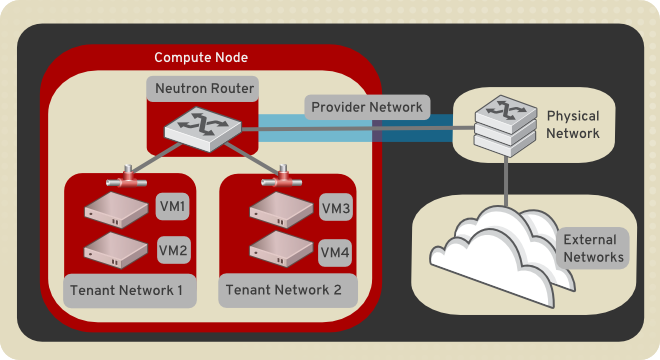The following diagram presents an overview of the tenant and provider network types, and illustrates how they interact within the overall Networking topology:
Tenant networks. Tenant networks are created by users for connectivity within projects; they are fully isolated by default and are not shared with other projects. Networking supports a range of tenant network types:
- Flat
All instances reside on the same network, which can also be shared with the hosts. No VLAN tagging or other network segregation takes place.
- Local
Instances reside on the local compute host and are effectively isolated from any external networks.
- VLAN
Networking allows users to create multiple provider or tenant networks using VLAN IDs (802.1Q tagged) that correspond to VLANs present in the physical network. This allows instances to communicate with each other across the environment. They can also communicate with dedicated servers, firewalls, load balancers and other networking infrastructure on the same layer 2 VLAN.
- VXLAN and GRE
VXLAN and GRE use network overlays to support private communication between instances. A Networking router is required to enable traffic to traverse outside of the GRE or VXLAN tenant network. A router is also required to connect directly-connected tenant networks with external networks, including the Internet; the router provides the ability to connect to instances directly from an external network using floating IP addresses.
Provider networks. Provider networks are created by the OpenStack administrator and map directly to an existing physical network in the data center. Useful network types in this category are flat (untagged) and VLAN (802.1Q tagged). It is possible to allow provider networks to be shared among tenants as part of the network creation process.


